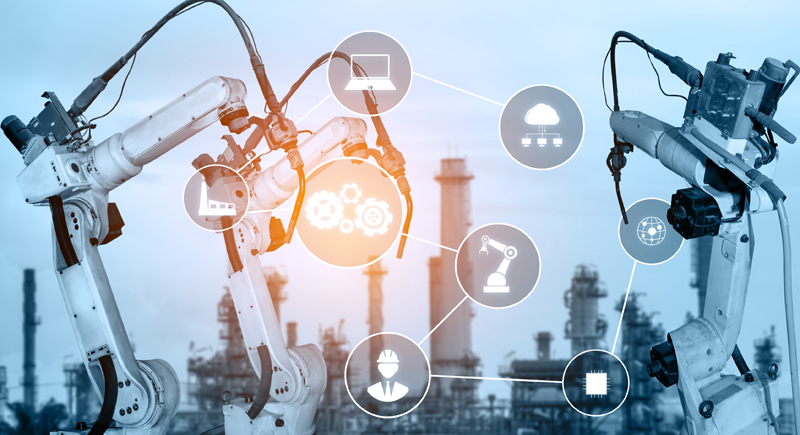

The integration of manufacturing and artificial intelligence (AI) has opened a new era of modern industrial innovation. Artificial intelligence-driven supercomputing systems are at the forefront of this movement, revolutionizing traditional manufacturing processes, increasing efficiency and enabling new levels of automation and personalization. In 2022, the global artificial intelligence manufacturing market will reach US$3.8 billion, and is expected to reach approximately US$68.36 billion by 2032, with a compound annual growth rate of 33.5% from 2023 to 2032. This article will discuss how artificial intelligence is changing the face of manufacturing in unprecedented ways.
The importance of labor-intensive manual labor and traditional machinery in the manufacturing industry has gradually weakened. With the advent of the digital age, The integration of modern artificial intelligence algorithms and supercomputers is driving profound changes in the manufacturing industry. Smart factories have become an important pillar of today's manufacturing industry, allowing machines to communicate seamlessly and make real-time decisions, thereby increasing production efficiency and streamlining operations. The application of this advanced technology has made the manufacturing industry move towards a more intelligent and efficient direction, bringing huge development opportunities and challenges.
One of the key impacts of artificial intelligence technology in manufacturing is its ability to significantly improve the efficiency of the entire production process. Through artificial intelligence algorithms, companies can promptly discover inefficiencies and bottlenecks in the production chain, thereby optimizing processes and reducing resource waste. This data-driven approach not only reduces production costs and improves production efficiency, but also enhances the sustainability and profitability of the manufacturing industry. By detecting and analyzing large amounts of data generated by sensors, equipment and machines, artificial intelligence systems help companies achieve higher levels of production efficiency and drive the manufacturing industry towards more intelligent and sustainable development.
After understanding how the era of artificial intelligence is redefining manufacturing, let’s take a look at some practical applications of artificial intelligence in manufacturing.
Artificial intelligence super computing has profoundly changed the manufacturing industry, making the production process more efficient, flexible and intelligent. Here are some key application areas:
In addition, powerful artificial intelligence models can predict the remaining service life of equipment, allowing for better planning of maintenance plans and budget allocation. This ensures that machines are only serviced when necessary, reducing unnecessary maintenance costs. Some real-life examples of predictive maintenance in manufacturing include vibration monitoring in CNC machine tools, temperature tracking in motors, oil quality in hydraulic systems, air pressure monitoring in pneumatic systems, wear analysis in conveyor belts, etc.
The application of artificial intelligence supercomputing in manufacturing is like a factory having a sixth sense that can anticipate failures before they even occur, saving millions of dollars in the process. The potential of the predictive maintenance market can be measured from the fact that the predictive maintenance market will increase from US$5.93 billion in 2023 to US$32.2 billion in 2030, with a compound annual growth rate of 27.4% from 2024 to 2030.
This information can be a simple go/no-go signal, or it can be complex with the identity, direction and position of each object in the image. While machine vision itself does not involve artificial intelligence, the two technologies are becoming more closely intertwined as developers turn to neural networks to enhance machine vision algorithms and improve their accuracy. For example, Audi has begun using artificial intelligence for spot welding quality control at its Neckarsulm plant in Germany. Before machine vision was deployed, employees had to manually inspect weld quality using ultrasonics and take random samples.
The potential and benefits of using artificial intelligence in manufacturing are huge, provided there are some challenges such as infrastructure and investment, data management and skills gaps, are adequately addressed. If can solve the above challenges, in which case the technology is expected to propel manufacturing into a new era, providing solutions to long-term challenges and bringing new opportunities for innovation and efficiency. As technology continues to evolve, its impact on manufacturing is expected to grow, reshaping entire industries.
The above is the detailed content of Gigafactory: The role of artificial intelligence in shaping the future of manufacturing. For more information, please follow other related articles on the PHP Chinese website!




